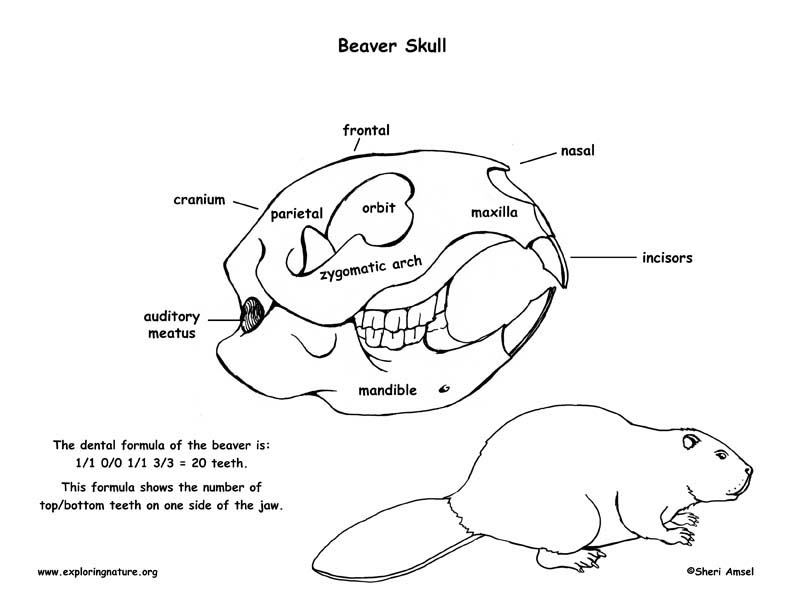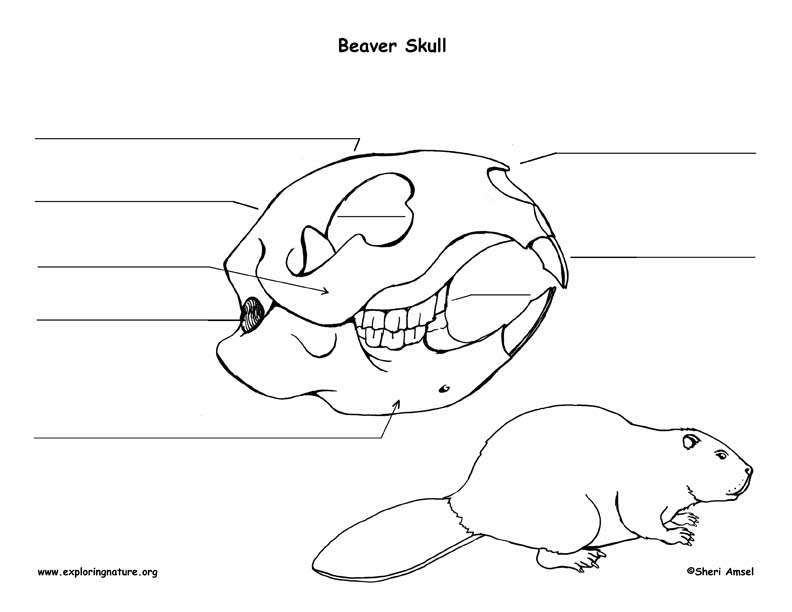

The beaver has four long, sharp, orange incisors that never stop growing. As they wear them down chewing trees, they keep growing back. The average beaver skull is about 5.5 inches long and 4.5 inches wide.
The skull is made up of the cranial bones (cranium) and the facial bones (which include the mandible). The joints of the cranial and facial bones are called sutures.
The cranium surrounds and protects the brain and the organs of hearing and balance. The facial bones form the structure of the face, hold the eyes, and the organs for taste and smell and anchor the teeth. They have the openings for air and food. The whole skull anchors muscles that hold the head up and allows the animal to chew. Most of the bones of the skull are flat bones, except the mandible. The mandible is attached to the skull by a type of hinge joint. It is the biggest, strongest bone of the skull.
The dental formula of the American Beaver is: 1/1 0/0 1/1 3/3 = 20 teeth. This formula shows the number of top/bottom teeth on one side of the jaw, so the total number comes from adding the top and bottom numbers and multiplying by 2. The beaver's dental formula shows that they have a total of 2 incisors on top, 2 incisors on bottom, 0 canines on top, 0 canines on bottom, 2 premolars on top, 2 premolars on bottom (that look like molars), 6 molars on top and 6 molars on bottom, for a total of 20 teeth.
When you research information you must cite the reference. Citing for websites is different from citing from books, magazines and periodicals. The style of citing shown here is from the MLA Style Citations (Modern Language Association).
When citing a WEBSITE the general format is as follows.
Author Last Name, First Name(s). "Title: Subtitle of Part of Web Page, if appropriate." Title: Subtitle: Section of Page if appropriate. Sponsoring/Publishing Agency, If Given. Additional significant descriptive information. Date of Electronic Publication or other Date, such as Last Updated. Day Month Year of access < URL >.
Amsel, Sheri. "Beaver Skull Diagram and Labeling" Exploring Nature Educational Resource ©2005-2024. December 13, 2024
< http://www.exploringnature.org/db/view/Beaver-Skull-Diagram-and-Labeling >

